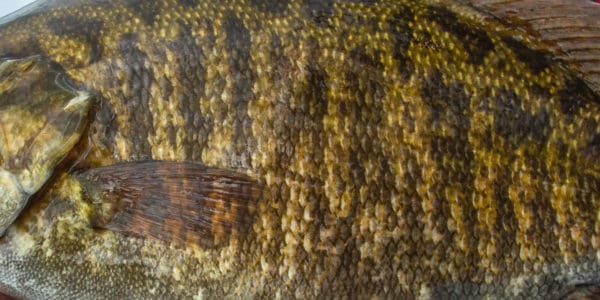Bass Pro Tour Anglers Will Participate in Smallmouth Study at CarParts.com Stage Seven at Lake St. Clair Presented by Covercraft
Category: article
Sep 7th, 2021 by Keith Worrall
Modified Sep 7th, 2021 at 2:11 PM


Bass Pro Tour Anglers Will Participate in Smallmouth Study at CarParts.com Stage Seven at Lake St. Clair Presented by Covercraft
ST. CLAIR SHORES, Mich. (Sept. 7, 2021) – At the upcoming CarParts.com Stage Seven at Lake St. Clair Presented by Covercraft that starts Friday on Michigan’s Lake St. Clair, anglers competing on Day 1 and Day 2 will once again have the option to use their livewells.
The last time you saw a livewell option on the Bass Pro Tour was at Lake Fork in 2020, where anglers had the opportunity to preserve ShareLunker largemouth – fish 13 pounds or larger – in their livewells to hand off to the Texas Parks and Wildlife Division for spawning purposes. This time around, it will be to help advance research into Largemouth Bass Virus (Ranavirus) and its clinical signs in smallmouth bass (Micropterus dolomieu).
The anglers are assisting Dr. Thomas Loch’s research team at Michigan State University’s Aquatic Animal Health Laboratory and Tom Wills at Michigan DNR, both of whom are currently researching if external skin lesions on smallmouth bass are linked to Largemouth Bass Virus (LMBV).
The Science of LMBV
Much of what we know about LMBV comes from the southern U.S., where the virus can result in the mortality of largemouth (Micropterus salmoides). It was first isolated from fish in Lake Weir in 1991 and has been considered the cause of dozens of fish kills in the late 90s and early 2000s. In largemouth, the virus causes lethargy, bleeding, enlarged organs, swim bladder lesions and death in adult-sized fish.
Recent research has shown the virus infecting smallmouth in the Chesapeake Bay watershed and several rivers in Pennsylvania. Dr. Loch’s lab has also been able to infect smallmouth with LMBV in the lab, demonstrating that external skin lesions appear on these infected fish. Dr. Loch’s team is drawing closer to finding a correlation between LMBV, external skin lesions, temperature and smallmouth bass kills that have occurred in the Susquehanna, Juniata, and Alleghany Rivers since 2005.
Collecting smallmouth that have skin lesions in St. Clair is part of the ongoing look into the prevalence and clinical signs of LMBV in the Great Lakes system.
Our anglers will report to the MLF Fisheries Management Division (FMD) during practice the number of smallmouth they catch that exhibit a skin lesion. Once competition starts, FMD will continue to tally the occurrences of skin lesions as part of the data we collect from every fish caught during the event. On Days 1 and 2, anglers will also be allowed to place any fish with a skin lesion into their livewells for donation to Dr. Loch’s lab for further analysis.
These fish will be transported back to the Michigan State Aquatic Animal Health Laboratory for observation, skin lesion biopsy, and virus isolation. We will also provide catch data – including GPS location – for each donated fish to calculate any correlations between location and LMBV prevalence.
Because these anglers may consequently have carried LMBV-positive fish in their livewells, FMD will implement a cleaning procedure for any angler that donates a fish. This will include using a disinfectant in the livewell and recirculation pumps for 15 minutes, then flushing the system and drying the livewells out on their off day.
The Fisheries Management Division – as well as the roster of Bass Pro Tour anglers – is excited to be part of this research project as well as helping to further this research in coming seasons.
Watch for regular updates on similar projects on the MLF Fisheries Management Division page. For complete details and updated tournament information visit MajorLeagueFishing.com. For regular updates, photos, tournament news and more, follow MLF’s social media outlets at Facebook, Twitter, Instagram, and YouTube.
About Major League Fishing
Major League Fishing (MLF) is the world’s largest tournament-fishing organization, producing more than 250 events annually at some of the most prestigious fisheries in the world, while broadcasting to America’s living rooms on CBS, the Discovery Channel, the Outdoor Channel, CBS Sports Network, the World Fishing Network, the Sportsman Channel and on-demand on MyOutdoorTV (MOTV). Headquartered in Tulsa, Oklahoma, with offices in Benton, Kentucky, the MLF roster of bass anglers includes the world’s top pros and more than 30,000 competitors in all 50 states and 13 countries. In 2019 MLF acquired FLW and rebranded it as MLF BIG5, which expanded its portfolio of catch, weigh and immediate release events to include the sport’s strongest five-biggest-fish format tournament circuits. Since its founding in 2011, MLF has advanced the sport of competitive fishing through its premier television broadcasts and livestreams, and is dedicated to improving the quality of life for bass through research, education, fisheries enhancement and fish care.
Major League Fishing – WE ARE Bass Fishing™
About MLF Fisheries Management Division
Major League Fishing’s Fisheries Management Division is dedicated to improving the quality of life for bass through Research, Education, Fisheries Enhancement and Fish Care. Under the leadership of MLF, in collaboration with Hall of Fame bass angler Gary Klein and renowned fisheries biologist Steven Bardin, the Fisheries Management Division provides opportunities to engage in initiatives that extend the life of the sport of bass fishing. These initiatives include targeted research programs, providing fans, anglers and youth with access to educational materials that help them become better stewards of our fisheries resources, and collaborating with local and state agencies to improve habitat essential for bass to thrive. From maximizing the health of an individual fish post-catch to stocking juvenile fish into waterbodies, the MLF Fisheries Management Division is committed to the health of our bass populations.